Strategies
Below are strategies for all content areas.
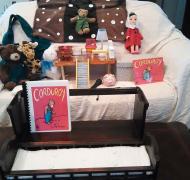 |
Making "Corduroy" Accessible to Readers with Visual ImpairmentsMaking "Corduroy" book accessible to children with visual impairments through storybox, tactile symbols, picture symbols, and talking book. |
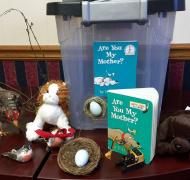 |
Adapting "Are You My Mother?" for Children with Multiple DisabilitiesAdapting "Are You My Mother?" picture book to make it accessible to children who are blind or visually impaired, including those with multiple disabilities |
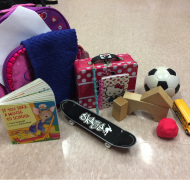 |
Adapting "If You Take a Mouse to School" for a Student with CVIMake an early childhood book accessible to children who are blind or who have CVI (Cortical Visual Impairment) or multiple disabilities. |
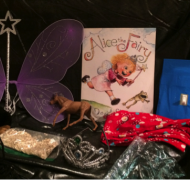 |
Making "Alice the Fairy" AccessibleTips to modify and adapt "Alice the Fairy" for children with visual impairments and additional disabilities |
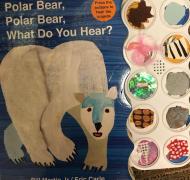 |
Braille and Tactile Book AdaptionsTips to adapt books with braille and tactile materials for emerging readers |
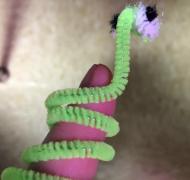 |
Teaching Finger Isolation to Braille Students with Additional DisabilitiesIdeas to teach finger isolation skills to braille students with visual impairments and multiple disabilities |
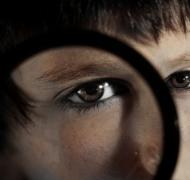 |
Checking My Work, I Am A Detective!Encourage braille students to find mistakes and correct them in their writing and braille texts. |
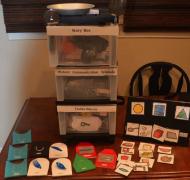 |
Pancakes, Crackers, and Pizza: Story Box and More!Tips to make early literacy book Pancakes, Crackers, and Pizza accessible to young children who are blind or visually impaired, using storybox, picture and tactile symbols |
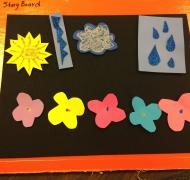 |
Storyboard for CVI or Braille LearnersCreate your own storyboard for spring for students with CVI or braille readers |
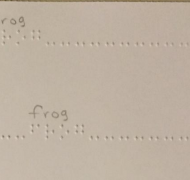 |
Adapting Tracking Activities for Braille ReadersTips to create tracking activities for beginning braille readers |
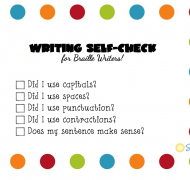 |
Writing Self-Check for Braille StudentsThis strategy teaches braille students to check their writing to discover and correct their mistakes. |
 |
Red Nose DayEncourage students with low vision, CVI or multiple disabilities to look at you by wearing a red nose! |
 |
Writing a Thank You LetterTeaching students to write thank-you notes gives them a chance to practice braille or print skills, as well as developing social skills. |
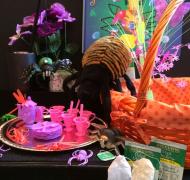 |
Making Miss Spider's Tea Party Accessible to Students with Visual ImpairmentsMake picture books accessible to children who are blind or visually impaired with storyboxes, picture symbols, tactile symbols, and a talking powerpoint book. |
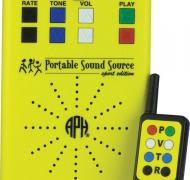 |
Activities to Develop Auditory SkillsActivities to develop auditory discrimination and listening skills in children and youth who are blind or visually impaired |
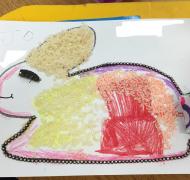 |
Alternate Solution to Coloring for Children with Low VisionTextured materials and collage offer an alternate way for students with low vision to participate in coloring or other art activities. |
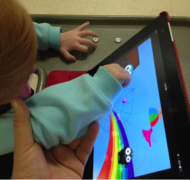 |
Add an iPad to your FVA / Learning Media Assessment Kit14 tips to use an iPad as part of the Functional Vision Assessment and Learning Media Assessment Kit (FVA/LMA) for young children with visual impairments or multiple disabilities. |
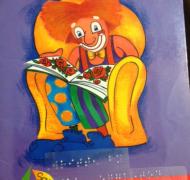 |
Modifying a Classroom Book Used for Guided Reading in an Inclusive SettingTips to make regular classroom books accessible to children who are blind or deafblind, with braille and tactile symbols |
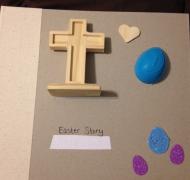 |
The Easter Story Simplified for Beginning Braille ReadersThe Easter Story from the Bible is simplified for beginning braille readers and children who are deafblind using interactive tactile symbols. |
|
|
Colorful Eggs: Tactile Book for Beginning Braille ReadersCreate your own tactile book for Easter using braille and tactual materials for children who are blind, visually impaired, deafblind or with multiple disabilities |
